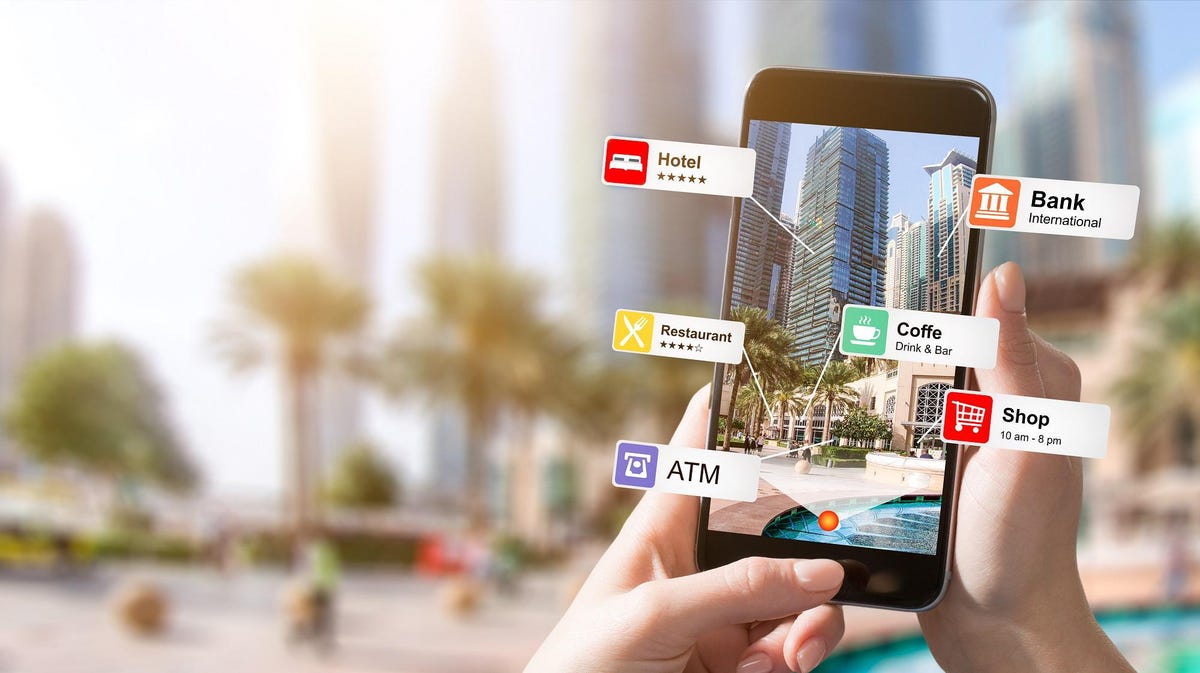Metaverse has been all the craze around here in the last year. That’s all thanks to Facebook’s parent company rebranding into Meta. However, Facebook is only one of many giant corporations showing great interest in Metaverse. Other well-known brands hoping to stake a claim in this virtual world are Coca-Cola, Gucci, and McDonald’s.
With all that’s going on, it’s about time the travel brands consider establishing their presence in the Metaverse, or they risk being left behind. The Metaverse is not merely a bubble. It’s, in fact, the historical evolution of computing. Steve Bambury, a Metaverse and Web3 consultant, said during his presentation at the Travelport’s event in Dubai, that since our world is 3D, it only makes perfect sense to engage with stuff in 3D.
Steve Bambury speaks to a vast audience of resellers, travel suppliers, and tech providers, describing the Metaverse as the confluence of VR (Virtual Reality), Spatial Computing, XR (Extended Reality), and Immersive Technology with NFTs, Blockchain, and Web3. Bambury shares that the users are not just looking for a cool way to interact.
Even more important, consumers have shown more interest in the content inside the VR than when the same content is conveyed through traditional channels. VR has portrayed more incredible emotive powers than all its predecessors. This is great for the travel industry as they rely on inspiration to create desire and potentially bag a booking.
 How Can Metaverse be Applied in the Travel Industry?
How Can Metaverse be Applied in the Travel Industry?
In case you are wondering how the travel industry can utilize the dynamics of VR and Metaverse, here are the three ways;
1. Use of VR to Showcase a Travel Experience or Destination
This is one of the most straightforward applications that has existed for several years already. Bambury cited several apps such as Travel World VR, Wander, National Geographic Explorer, Brink Traveler, and Sygic Travel. These were just examples of how VR can help travelers see a destination virtually which have been considered to create the passionate drive to see the place in person.
2. Use of VR to Create a More Interactive Engagement with Consumers
As the popularity of the Metaverse rises, everyone will eventually have shops or land there. These shops will come in handy as places to reach their customers. Travel suppliers will possibly have a form of a virtual store.
Travel sellers can host conversations with their consumers face to face there. For example, using the capabilities of this technology, a customer could be placed in a specific location, perhaps even a hotel room tour as they continue in talks with the travel seller.
Besides having a virtual storefront, it would help to claim a specific location in the Metaverse. Of course, acquiring land next to big brands will be pretty pricey. So, it would be better to get in early as you will have more to choose from.
3. Creation of Complex Immersive Experiences in the Metaverse
According to Bambury, in the next 5-15 years, we will see consumers choose where to travel virtually. It could be ancient Rome or even the fictional island of Atlantis. Right now, this may sound a bit ridiculous, but with VR, there is a potential for virtual trips. People will visit some impossible places, the future or the past. The real-world trips won’t certainly stop, but people will supplement their real-life travel with such crazy stuff.
In Summary
It might take a couple of years before the entire concept of Metaverse is fully actualized and becomes a fundamental tool for travel selling and marketing. However, it would be wise to start exploring as soon as possible as the process of building in the Metaverse will be complex.
The Metaverse is not particularly easy to build. It’s almost like creating a video game or a movie. While the technology is still at a very early stage, it presents great opportunities for future proofing travel companies and the travel industry.






